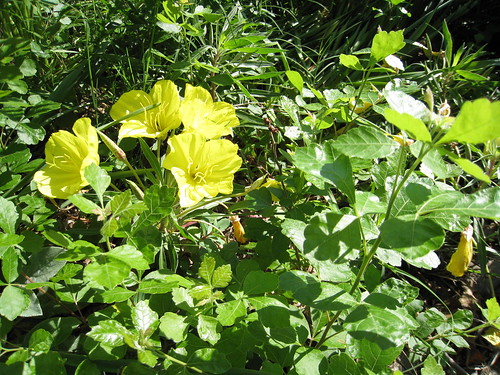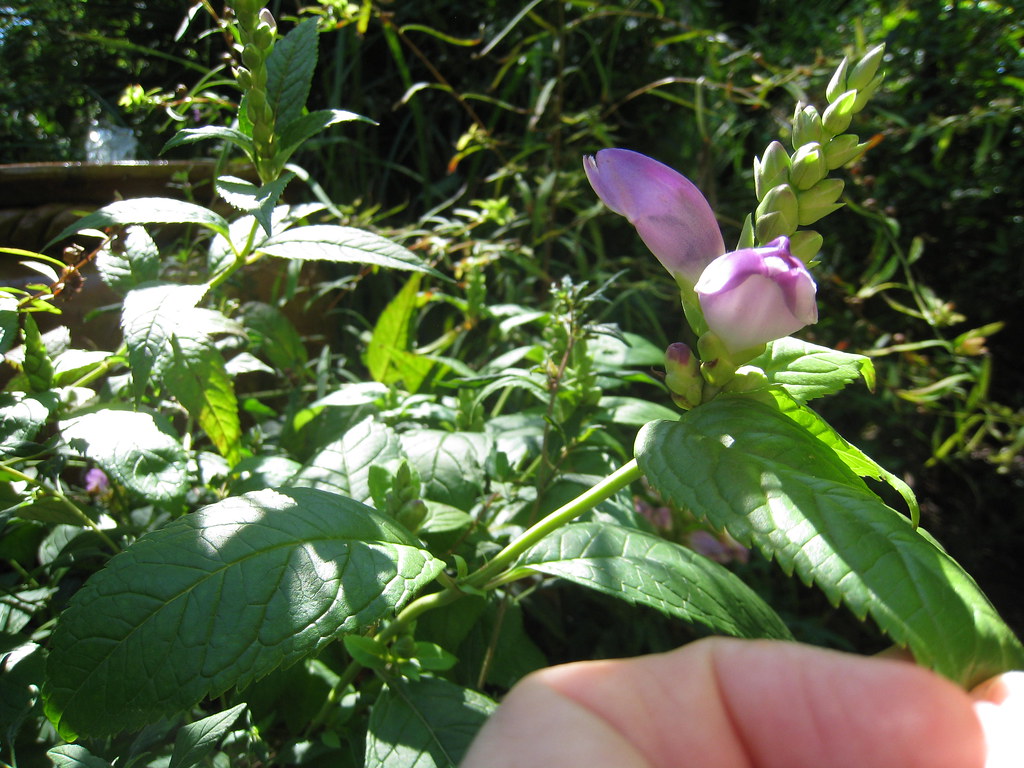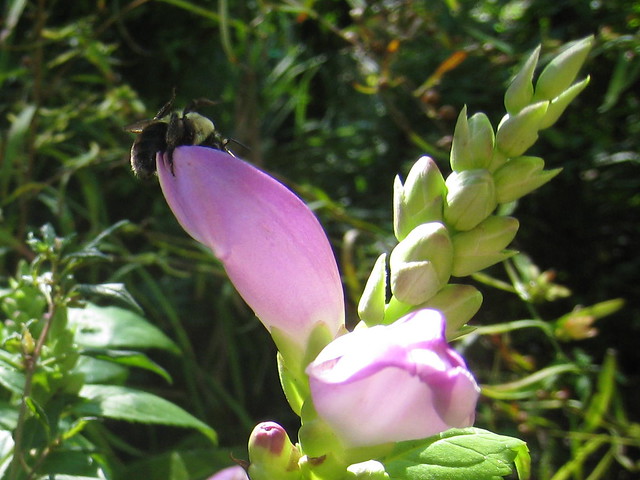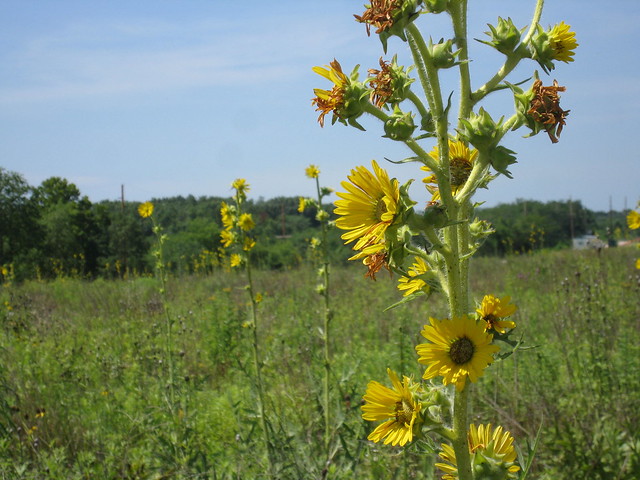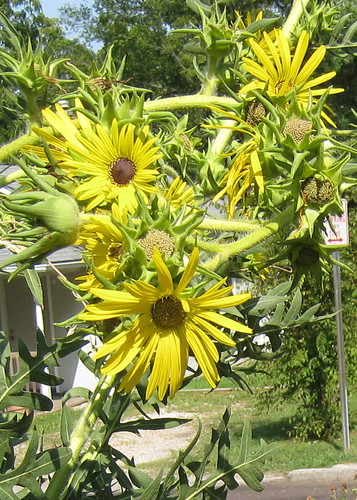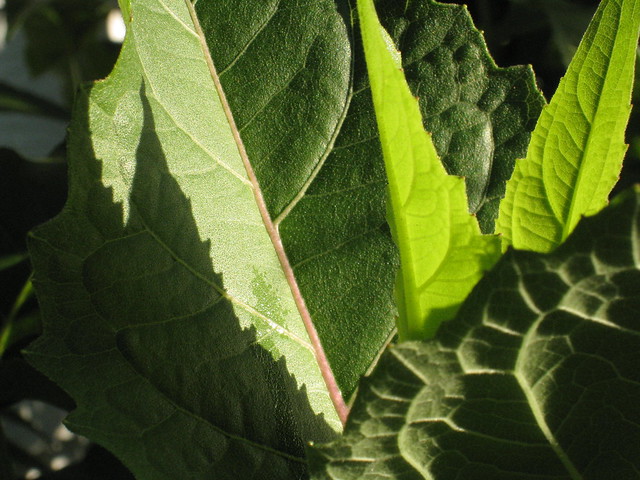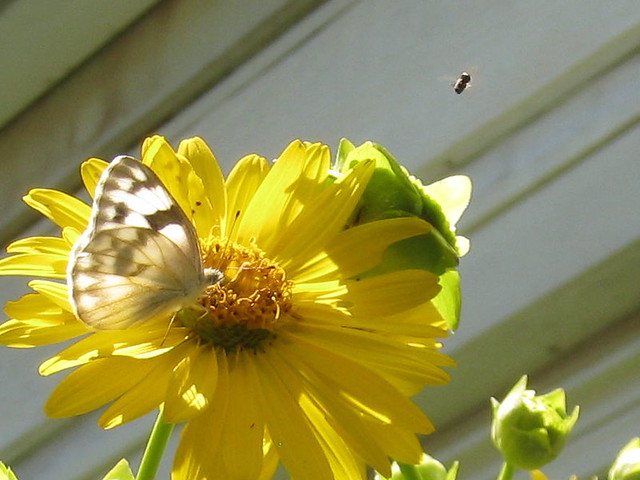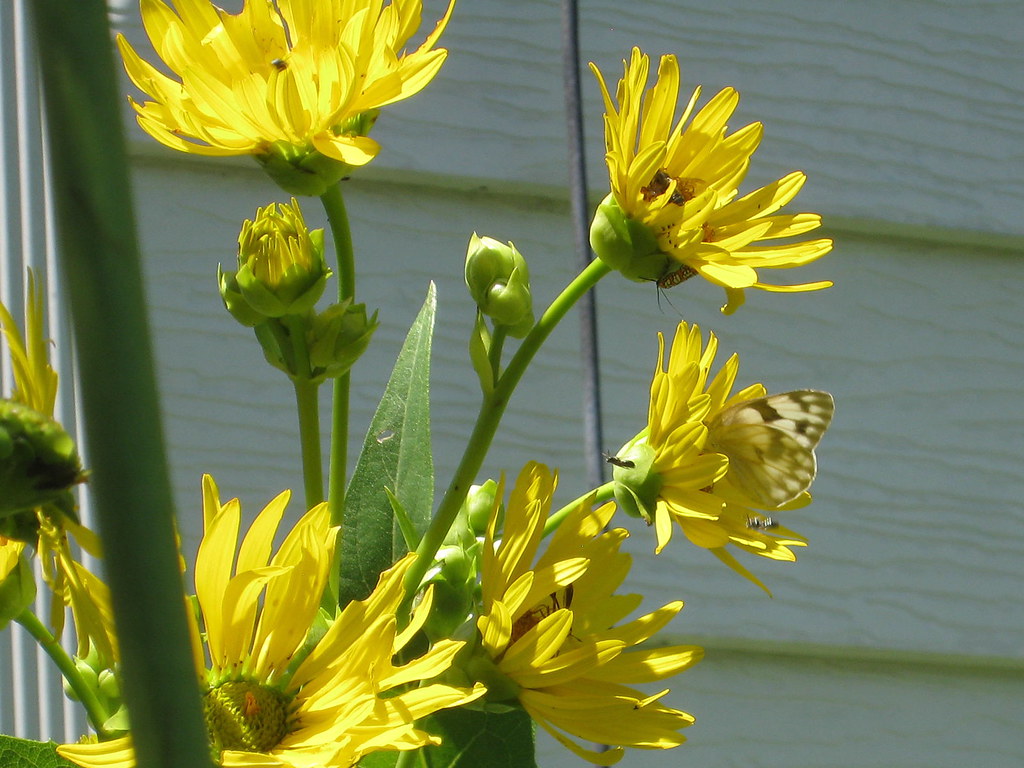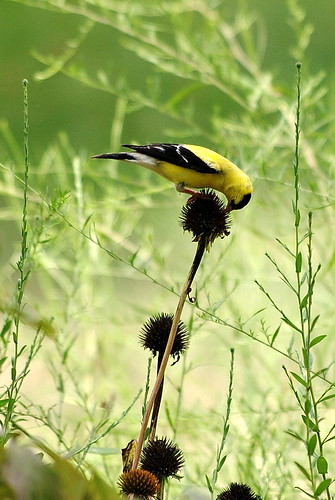- thin, rocky soils
- exposed bedrock
- steep slope
- facing south, west, or southwest
- dry, fast draining soils
- fire adapted plants
- scarcity of trees
Spring is busy for gardeners with binoculars, but I decided to make time for "Missouri's Glades," a continuing education class at St. Louis Community College, sponsored by Missouri Native Plant Society (MONPS), and taught by their past-president, Rex Hill. Our first field trip was to a dolomite glade less than an hour from me, Victoria Glades in Jefferson County. One portion of the glades is managed by The Nature Conservancy, the other by Missouri Dept. of Conservation.
Let's get right to the amazing plants and animals: I have never seen so much Indian Paintbrush (Castilleja coccinea)! The whole hillside had a reddish cast. Alongside the paintbrush, Fremont's Leather Flower (Clematis fremontii) bloomed. This is a non-climbing clematis, rare and protected in Missouri. I have never seen it in bloom before.
 |
| A female broad-headed skink warms in the sun from a tree cavity on the edge of the glade. |
In spite of strong breezes, we saw butterflies too.We watched a very faded, transparent Monarch nectaring on leather flower. There were Eastern Tailed Blues on False Toadflax, and we saw several Pearl Crescents. I just managed to get a poor photo of a dark butterfly, which I think was a lifer for me, a Dusted Skipper!
One of the group found a Wild Turkey egg in the dry grass. A good part of the egg was missing, and as we look inside, we could see a large beetle that apparently was eating what was left of the yolk, or possibly, was eating whatever was eating the yolk. After following Beetles in the Bush and taking my first tentative steps toward appreciating insects, I was excited that I identified it as a carrion beetle, Necrophila americana.
John managed to find us a striped bark scorpion, a Western Slimy Salamander, and this little dandy, an Eastern Hog-nosed Snake. Non-venomous hog-nosed snakes are the entertainers of the reptile world. A hog-nose can play possum, rolling over belly-up leaving its tongue out. When being "dead" doesn't seem the best defense, it will try to bluff its way out of the jam. It can pull its head and front portion upright, spreading its neck in a thoroughly convincing imitation of a cobra; when I happened to come upon one of these tricksters, it made my hair stand on end! Pat, who volunteers at a St. Louis County conservation area, told me that they had reports of 3 cobras just that week!
I took about 100 photos--seriously. I shared a few of them here.


